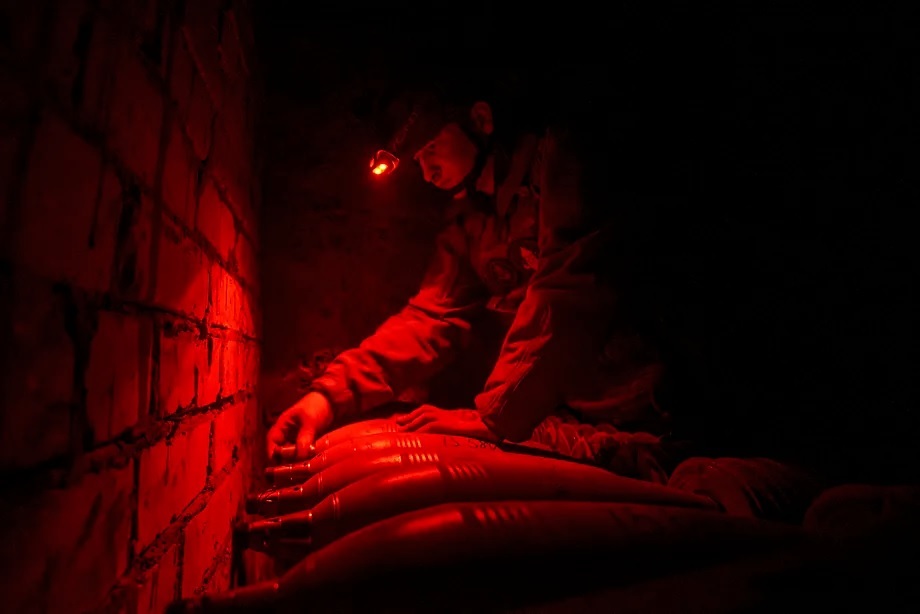Far from decreasing in intensity, the invasion of Ukraine is experiencing its bloodiest moments these days. Russia is determined to step on the accelerator and advance inch by inch through the most defended areas of the front, full of trenches, spy drones, minefields, and solid fortifications. As a result, the Z troops, with no strategy beyond the cannon fodder they daily throw against the Ukrainian front, have broken all previous casualty records (dead, wounded, and missing).
According to figures provided by British intelligence and the Institute for the Study of War (ISW), the Russian casualty rate has increased from 1,000 per day, which they reached last February during the capture of Avdivka, to the current 1,500 casualties in their attempt to take the Pokrovsk area. "Russian forces can achieve operationally significant gains if Ukrainian forces do not halt ongoing Russian offensive operations, but the Russian army cannot sustain such loss rates indefinitely, especially with such limited gains," say experts from the think tank.
Russia has already lost the equivalent of five infantry divisions (about 14,000 soldiers each) in an effort that has taken them about 35 kilometers north and threatens the ruins of Pokrovsk to the west and Toresk to the east. "Russian forces are likely to have accumulated a large amount of equipment in priority areas of the front, but the decrease in stocks of Soviet-era tanks and armored vehicles and the current production rates of armored vehicles (much lower) will make the losses unsustainable in the long term," says the ISW.
The use of guided aerial bombs by both sides, possibly the most destructive weapon on the current battlefield, is one of the reasons for such a high casualty count, although in the case of Russia, casualties are multiplied because the attacker usually accumulates more dead than the defender. In the Pokrovsk area, according to one of the commanders of the forces defending the city, "the ratio is 10 Russian soldiers to one Ukrainian," as revealed to this reporter last September. Ukrainian forces have started using drones to maintain attacks and thus preserve the lives of their soldiers.
The Ukrainian armed forces handle figures similar to British intelligence and Lloyd Austin, US Secretary of Defense, who estimates casualties at around 36,000 per month. Months ago, Vladimir Putin managed to recruit 30,000 Russian volunteers at the cost of paying large sums of money. But for months now, although he has doubled the economic reward for signing the contract to go fight in Ukraine, he no longer manages to recruit as many workers.
Due to the current casualty rate, very soon he will be forced to launch a second major mandatory mobilization if Donald Trump fails to stop the war. And that is a taboo step for the Kremlin, which does not want to suffer the political wear and tear of that decision and will ask Kim Jong-un to send thousands of North Koreans to avoid it.
Donald Trump's son, Donald Jr., posted a message on Instagram from Republican Sarah Palin on Sunday mocking the President of Ukraine with the following message: "You have 38 days left to lose your assignment," referring to the military aid he receives from Washington. The Trump family's sympathies for Putin are neither a mystery nor new, but these types of messages reveal to what extent the new administration feels disconnected from the previous administration's efforts to arm Ukraine to prevent its fall to the Russian invaders.
The Kremlin stated that the US President-elect has given "positive signals" regarding resolving the conflict between Russia and Ukraine. "The signals are positive. Trump, during his election campaign, said that he sees all of this [the conflict in Ukraine] through agreements. And that he can achieve an agreement that leads to peace," said the Russian presidency's spokesperson, Dmitri Peskov, in an interview with state media.
Meanwhile, long-distance attacks, almost always with drones of Iranian origin, have multiplied in Ukraine. Russia launches them every night against the main cities with deadly precision. Kiev has also developed its own models and has sent Russia the message that two can play this game. Yesterday, a swarm of these unmanned aerial vehicles flew over the skies of Moscow and other Russian regions to attack several targets.
